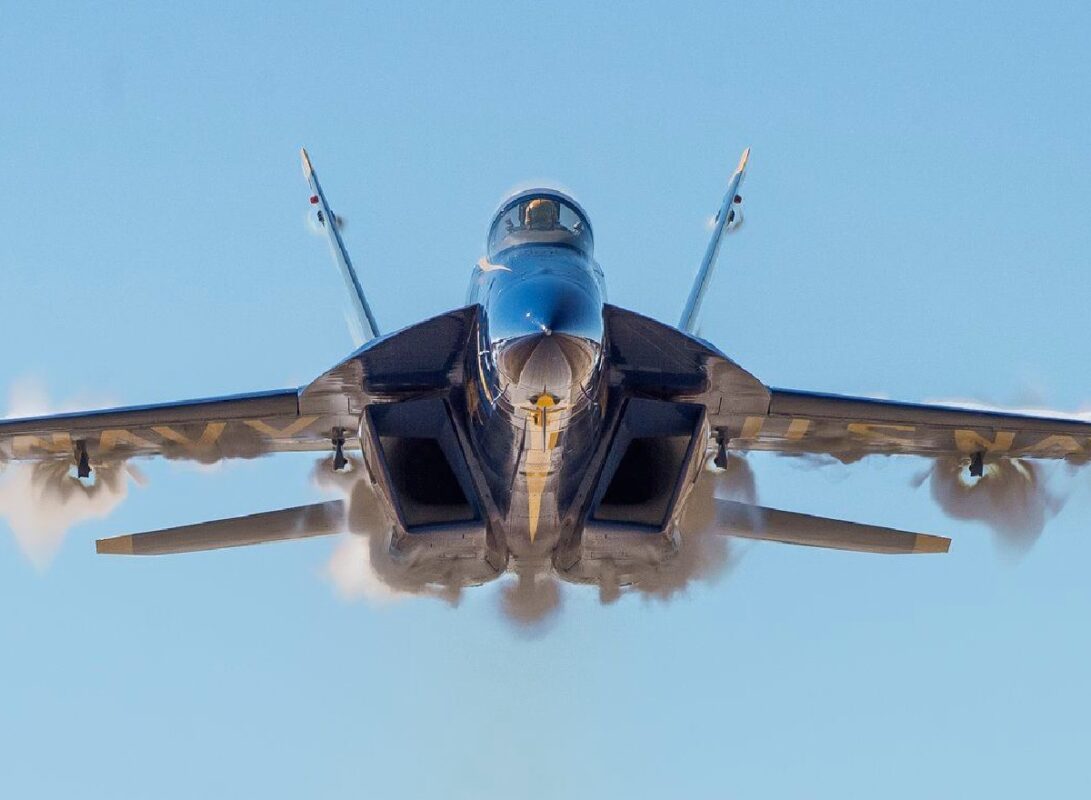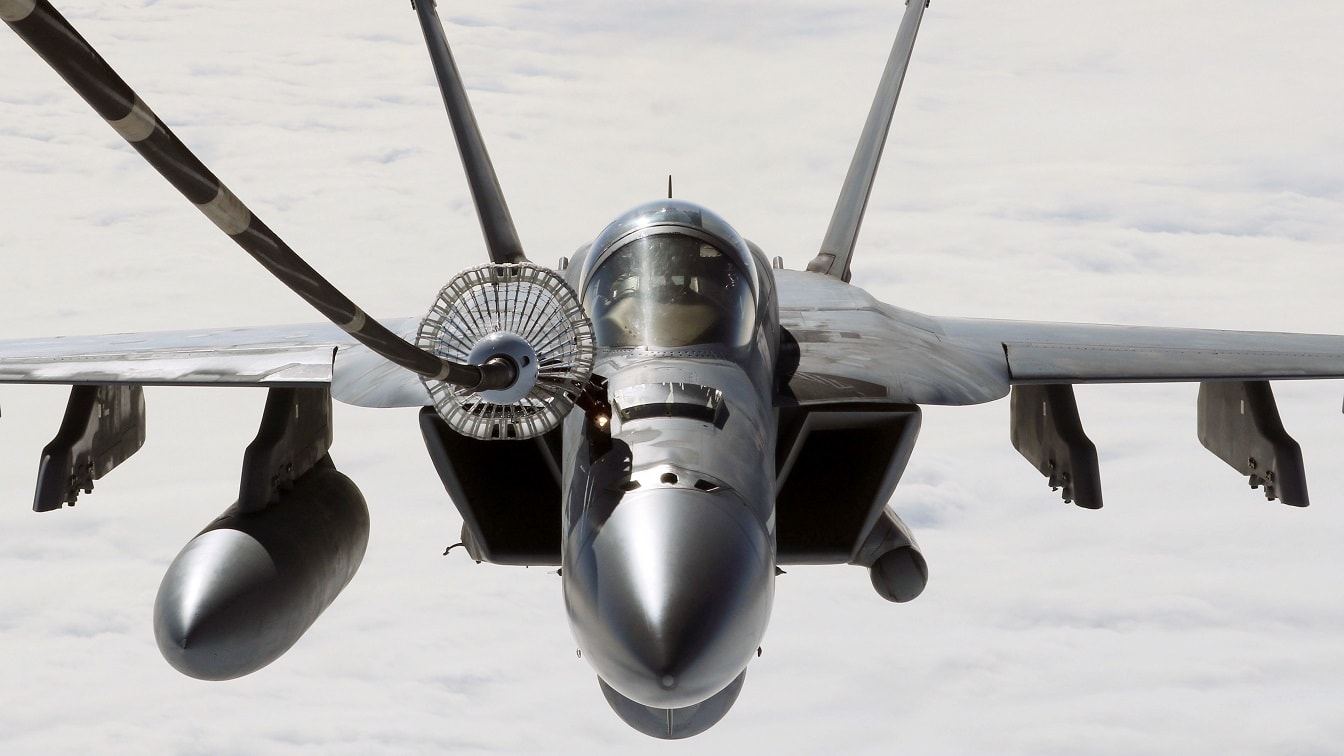The Block III F/A-18 Super Hornet is truly a remarkable fighter jet. A former member of the U.S. Air Force explains why: The U.S. Navy has relied upon the McDonnell Douglas F/A-18 multi-role fighter for almost four decades. The versatile fourth-generation fighter has undergone occasional upgrades over the years, in order to maintain relevance and competitiveness. Three iterations of the jet have been released, each one better than the last.
Evolution from Block I, II, and III Super Hornet
The first iteration was the Block I “Hornet.” Designed in the 1970s, the original Hornet became operational in 1984. The Block I served as the preeminent Hornet until 2005 when the Block II “Super Hornet” joined the fleet. And just last year, the U.S. Navy augmented its force structure with the Block III “Super ‘Duper’ Hornet.” Featuring several improvements from the Block II, the newest Hornet suggests that the Navy plans to use the F/A-18 for decades to come; indeed, the Block III Hornet is capable of every mission in the tactical spectrum.
Aerospace design has been trending toward platforms that make life easier for the pilot. The logic follows that if an aircraft is easier to fly, the pilot’s performance will improve. With that theory in mind, the Block III cockpit features a streamlined layout, known as the Advanced Cockpit System. Whereas the Block II’s cockpit featured a kaleidoscope of screens and gauges, the Block III’s ACS features simple, customizable touchscreens. Very user-friendly. The result: the pilot has increased “vision” of the battlespace while requiring less brain power and time to process information displayed in the cockpit.
Like the F-35 Joint Strike Fighter, the new Block III Hornet features improved network capabilities to provide the pilot with increased data. Information sharing is becoming a prerequisite for modern airframes. Accordingly, the Block III was designed with new gadgets to collect and share information. For example, the new Hornet features an innovative mission computer, the Distributed Targeting Processor-Networked (DTP-N). The DTP-N represents a significant upgrade from the Block II’s mission computer; the DTP-N is 1,700 percent more powerful than the Block II’s computer. To share all of the information gleaned with the DTP-N, the Block III will rely on the Tactical Targeting Network Technology (TTNT). While the Block III has been drastically upgraded from its predecessor concerning information sharing, the F-35 is still the most capable system in the skies.
The F/A-18 Adapted Over the Years
Back in the 1970s, when the original Block I Hornet was designed, stealth technology was not yet necessary to penetrate enemy airspace. Now, with the improvements in air-space defenses, stealth has become something of a prerequisite for modern fighters. With that in mind, the new Hornet was modified to have a smaller radar cross-section (RCS). While still not a true stealth aircraft, the Block III is harder to “lock-on” to than its predecessor, meaning the new jet will have improved survivability in enemy airspace.
Remarkably, the Block III Hornet has a lifespan that is two-thirds longer than the Block II; While the Block II was only rated for 6,000 flight hours, the Block III is projected to handle up to 10,000 – a massive increase. The improved lifespan is expected to reduce costs – and will better complement the strategic habits of a nation with the tendency to engage in perpetual conflict.
Speaking of perpetual conflict, the Block III Super Hornet was designed with China in mind; the Block III was designed with improved range. Using conformal, shoulder-hugging fuel tanks with 3,500-pound capacities, the Block III will have the range to conduct missions against Chinese targets, while staying beyond the range of China’s hypersonic anti-ship missiles. Conversely, the Block II Hornet, or the F-35 Joint Strike Fighter, has a relatively limited range, which would have required missions to be launched from within China’s hypersonic anti-ship missile range – placing the U.S. Navy’s nuclear-powered aircraft carriers in existential danger.

F/A-18 Super Hornet. Image: Creative Commons.
Harrison Kass is the Senior Defense Editor at 19FortyFive. An attorney, pilot, guitarist, and minor pro hockey player, he joined the US Air Force as a Pilot Trainee but was medically discharged. Harrison has degrees from Lake Forest College, the University of Oregon, and New York University. He lives in Oregon and listens to Dokken. Follow him on Twitter @harrison_kass.

